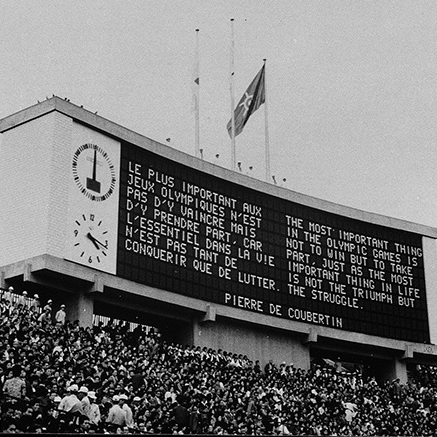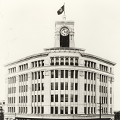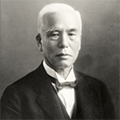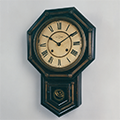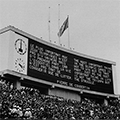In 1999 Seiko released the “Spring Drive,” the world’s first watch driven by the mainspring power and controlled by quartz at the same time. The development of Seiko’s unique Spring Drive started in 1982 and took about 20 years to reach the stage of commercialization. Spring Drive is a triumph in watch technology as the industry’s “third engine” fusing mechanical and electronics.
1. Challenges to the Development of the Spring Drive
he development of the spring drive advanced slowly over the course of many years. A succession of difficult technical challenges had to be overcome.
There were four main challenges:
・To secure the precision of the spring within ranges of low torque and high torque
・To develop a low-loss generator to secure the duration
・To develop an IC capable of being driven by low power
・To develop a highly efficient automatic winding mechanism
Seiko’s engineers ultimately solved these challenges through various contrivances.
2. Story of the Development of the Spring Drive
-
STORY 01
The high precision of mechanical watches imagined by Yoshikazu Akahane
-
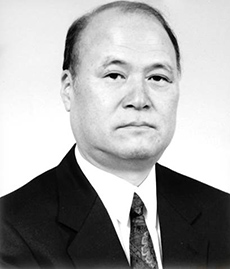
In 1969, Seiko commercialized the world’s first quartz wristwatch, the “Seiko Astron.” The new product drastically improved the precision of wristwatches.
The 1970s were a decade of thriving production of the new quartz watches. Yoshikazu Akahane, a young engineer working for Suwa Seikosha (currently Seiko Epson Corporation) late in that decade, imagined a watch with a totally new mechanism.
His idea was to redesign a mechanical watch into a high-precision quartz watch by replacing the regulator with an IC and quartz control mechanism.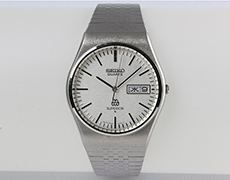
When Akahane entered Suwa Seikosha in 1971, he engaged in the development of batteries for quartz watches. One of his main projects was “Twin Quartz,” a watch equipped with a second quartz oscillator to correct errors of the first quartz oscillator caused by temperature fluctuations.
The development contributed to a prominent advance in the precision of quartz watches to ±5 seconds per year.
Soon afterwards, Akahane developed the idea of a “Quartz Lock” that would correct errors of a mechanical watch using a standard quartz watch device.” He ultimately realized the idea by adopting a method to correct the precision of the Twin Quartz. He applied for a pioneer patent for the invention in 1978.
-
STORY 02
Development path to the practical application of the “Quartz Lock”
-
In 1982, Suwa Seikosha’s product developers turned their attention to two big development themes related to energy: solar power generation and manual winding power generation. (The latter theme would ultimately lead to the development of the Kinetic, a quartz watch that generates power by automatic winding.)
Akahane had turned up at the company’s busy Development and Design Department and enthusiastically explained the principle of the “Quartz Lock.” His idea was taken up as a new theme.
Akahane used the example of a bicycle to describe the principle of the “Quartz Lock”:
“If you coast down from the top of a mountain by bicycle beside a pacemaker, the force of gravity provides all the energy you need. You may even have to brake periodically so as not to overtake the pacemaker.”
Akahane and his team made an experimental model to verify the principle of the “Quartz Lock.” The prototype worked for four hours.
Although the energy consumption had to be reduced by one digit to achieve practical use, the principle seemed achievable with existing technologies. Primary development began in 1982, a period of high energy-saving consciousness in both industry and society. The principle was an extension of power generation techniques by manual winding.
-
STORY 03
Birth of the “Spring Drive” after Two Aborted Attempts at Development
-
Although the primary development started in 1982, existing technologies were not capable of sustaining IC function for 48 hours solely by mainspring power. An IC with vastly improved energy efficiency and power consumption (almost 100-fold higher efficiency compared with the final Product) was required for practical use.
(By achieving the 48 hour goal, Suwa Seikosha hoped to design a watch that could be removed from a user’s wrist and stay running for a full weekend, Saturday and Sunday.)
In 1983, the development team gave up on the project. They foresaw no prospects of success, no matter how hard or long they worked onward in the months and years ahead.
A second development effort was started in 1993, ten years after the project was cancelled. Energy-efficient, low-power ICs were at last available. A technical environment conducive to the spring drive had evolved along with the Kinetic, the quartz watch powered by automatic winding, released by Seiko Epson Corp. in 1988.
The secondary development was conducted jointly with Seiko Instruments Ltd. (currently SII), a company specialized in the production of mechanical watches.
Regretfully, the prototypes developed by the two companies through endless effort and contrivance only ran for about a day and still consumed too much power (about fivefold more power compared with the final product). Unable to reduce the power consumption, the development team abandoned the project again in 1994.
The third development was commenced in 1997 at the behest of Akahane, who had since become the deputy general manager of the Watch Division.
When they started they still saw no prospect of achieving the goal of 48-hour duration.
The circuit design team was instructed to start work on power saving. In addition to focusing on power generation efficiency, they planned to extend the duration by drastically reducing power consumption.
This wasn’t a strategy they had attempted in the past. Ultimately they found a way to effectively exploit the power that had been formerly lost when it was braked.
An IC with extremely small power leakage was completed in December 1997.
The development of a breakthrough IC called the SOI-IC allowed the watch to consume less power than it produced. This opened a way to the implementation of the spring drive.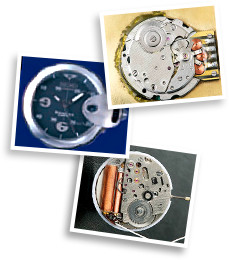
Soon afterwards, in April of 1998, Akahane’s team managed to present a technical release at Baselworld.
Sadly, in August of the same year, news of the death of Yoshikazu Akahane, the father of the spring drive, was announced. He was only 52 years old.
The later phases of development proceeded smoothly. The Spring Drive was exhibited at Baselworld in 1999, where it received a great reaction. A model installed with the caliber 7R68 was released on December 11 of the same year. This was the birth of the “Spring Drive,” Seiko’s unique design fusing the features of mechanical and electronics. The third development attempt was at last a success.
Twenty years had passed since Akahane came up with his idea. Eighteen years had passed since the development effort commenced.
3. Mechanism of the Spring Drive
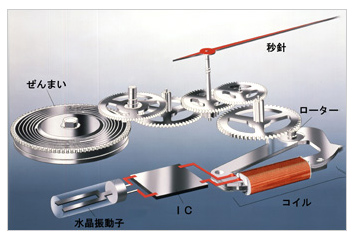
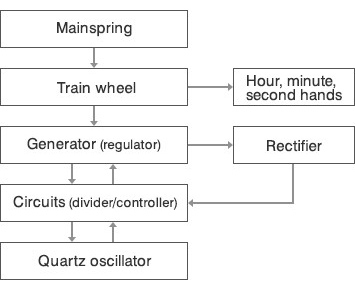
1. The spring drive works like a mechanical watch, driving the mechanisms with the force generated from the unwinding of the mainspring.
2. A small power from the spring is transmitted to a rotor rotating fitted with a magnet that generates electricity.
3. The electric power activates the IC and vibrates the quartz oscillator, vibrating 32,768 times per second (32,768Hz).
4. A circuit called a frequency divider changes the frequency of the quartz oscillator into a signal 8 times per second (8Hz) and sends the fixed reference signal at a frequency of 8Hz.
5. The IC keeps the rotor moving at a constant speed to synchronize the 8Hz reference signal. The rotor brake is sequentially activated and released by electro - magnetic force while the reference signal of the quartz and the rotational speed of the rotor are compared.
6. As a result, this mechanism achieves an accurate speed by transmitting a controlled movement in following order: mainspring→ rotor→ wheels→ hands.
4. Features of the Spring Drive
・Since the energy source is the mainspring, the watch requires no parts to store large amounts of electrical energy such as a primary or secondary battery. ※ The watch requires no step motor of the type used for a quartz watch or the like.
・The time reference is based on the quartz oscillator even though it is driven by the mainspring. It therefore achieves a high precision comparable to that of a quartz watch (e.g., a monthly difference rate of less than ±15 seconds).
・The second hand moves in glide motion that conveys a sense of passing time. (Glide motion : the second hand moving smoothly, not in one-second steps like a quartz watch or with a finely ticking beat moving like a mechanical watch.)
・A long and thick hand can be used for the watch since the hand is driven by the mainspring instead of the motor.
・Unlike quartz watches, whose batteries eventually die, a spring drive watch is ready to use whenever needed, just like a mechanical watch. It works even after the passage of years.
5. Models Driven by the Spring Drive
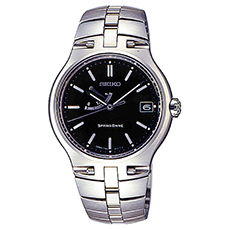
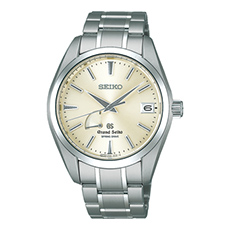
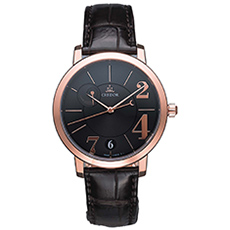

The Grand Seiko used the vertical clutch, a method of connecting the clutch by pressing the two disks against, to transmit power from the basic train wheel to the chronograph train wheel.
An accurate stopwatch function in perfect alignment was achieved, combining with the glide motion of the second hand.

The Spring Drive Spacewalk was developed for use on the International Space Station and proved its high performance in space.
This watched worked flawlessly as a self-winding watch for the whole duration of its mission in spite of the zero gravity environment of the International Space Station. Unlike a quartz watch, the Spring Drive Spacewalk requires no battery. The battery-free design eliminates the risk of battery damage caused by severe temperature fluctuations and strong radiation exposure during activities in open space outside of a spacecraft. The high airtightness of the Spring Drive Spacewalk is also essential, as it prevents the leakage of lubricating oil from the watch body due to vaporization in the vacuum of space. This watch told the exact time and functioned perfectly as a stopwatch for the astronauts on the International Space Station.
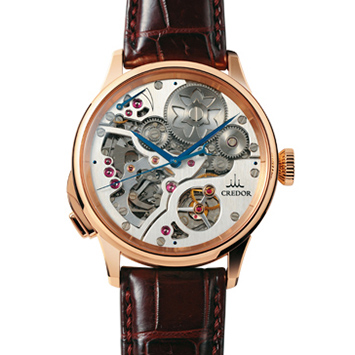
“The minute repeater,” a mechanism requiring extremely advanced design technology and assembly adjustment techniques, was installed in the spring drive to achieve a top-grade complicated watch.
The spring drive, with its silent sweep second hand movement, is the best drive system for the minute repeater mechanism, which tells time by the sound of a gong. The timbre of the gong is especially beautiful when sounded in silence.
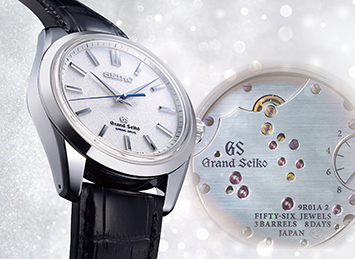
This watch is capable of continuous drive for up to 8 days (about 192 hours) through an arrangement of three barrel drums in series.
The precision is improved to a monthly rate of ±10 seconds.
References
・Micro Mechatronics Vol. 53, No. 200 (The Horological Institute of Japan)
・Oda, Ichiro. World Wristwatch No.60, 61, “Secret Story of the Spring Drive Development” (World Photo Press)


